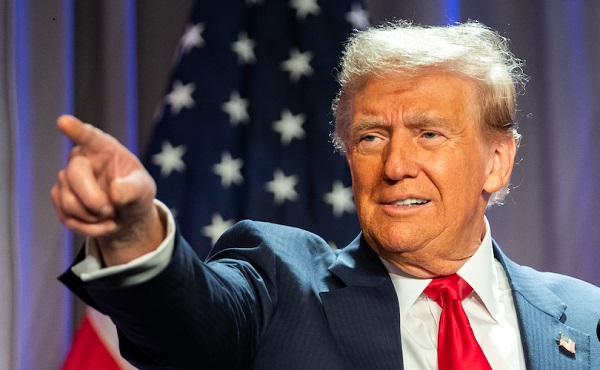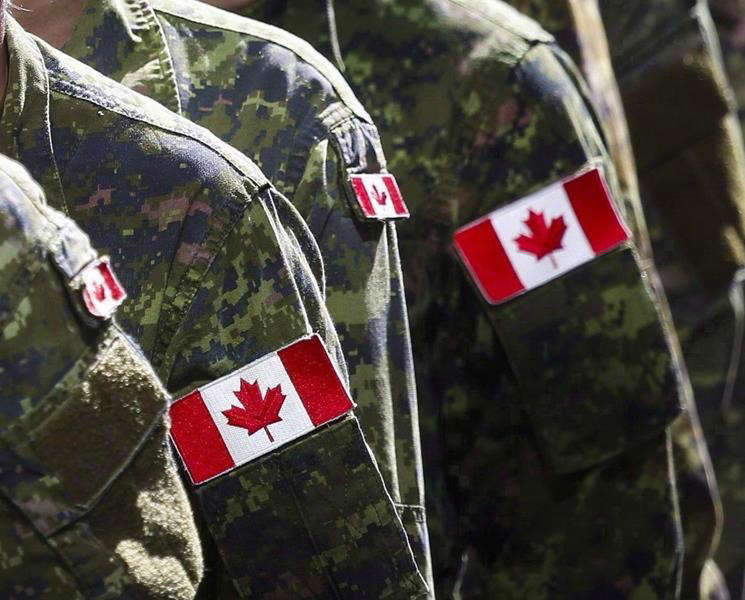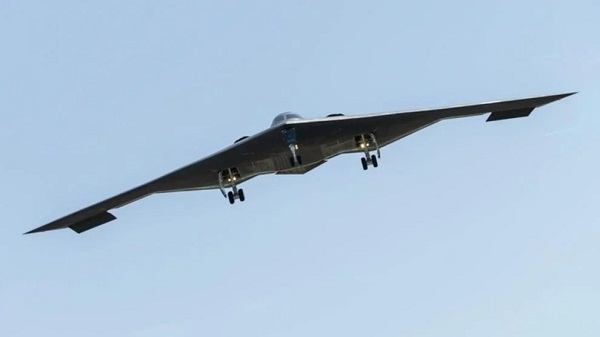Business
Trump puts all federal DEI staff on paid leave

From LifeSiteNews
Trump’s shuttering of federal DEI programs is in keeping with his promise to ‘forge a society that is colorblind and merit-based.’
President Donald Trump has ordered all federal diversity, equity and inclusion (DEI) staff to be placed on paid leave by Wednesday evening, in accordance with his executive order signed on Monday.
The president pledged during his inaugural address to “forge a society that is colorblind and merit-based,” which is the impetus behind his efforts to abolish DEI programs that prioritize race and ethnicity above merit when hiring workers.
Trump’s Executive Order on Ending Radical and Wasteful Government DEI Programs and Preferencing stated, “Americans deserve a government committed to serving every person with equal dignity and respect, and to expending precious taxpayer resources only on making America great.”
“President Trump campaigned on ending the scourge of DEI from our federal government and returning America to a merit based society where people are hired based on their skills, not for the color of their skin,” White House press secretary Karoline Leavitt said in a statement Tuesday night. “This is another win for Americans of all races, religions, and creeds. Promises made, promises kept.”
The Office of Personnel Management issued a memo to the leaders of federal departments instructing them to inform employees by 5 p.m. ET on Wednesday that they will be placed on paid administrative leave as all DEI offices and programs prepare to shut down, according to NBC News.
It is unclear how many employees will be affected by the erasure of federal DEI programs.
Diversity training has “exploded” in the federal government since Joe Biden took office in 2020, the Beacon noted, with all federal agencies having mandated a form of DEI training before he left office.
DEI initiatives have long been widely denounced by conservatives and moderates as divisive, but they have been coming under increasing fire for undermining the competence and most basic functioning of public institutions and private corporations, even putting lives at risk.
For example, some commentators have blamed growing – and at times catastrophic and fatal – airplane safety failures in part on DEI hires and policies. Upon the revelation that a doctor at Duke Medical School was “abandoning… all sort(s) of metrics” in hiring surgeons in order to implement DEI practice, Elon Musk warned that “people will die” because of DEI.
Conservatives have also criticized DEI for stoking rather than curing division. A recent study shows that DEI programs actually breed hostility in businesses and schools.
armed forces
How Much Dollar Value Does Our Military Deliver?

To my great surprise I recently noticed that, despite being deeply engaged in wars against at least four determined enemies, Israel doesn’t spend all that much more on their military than Canada does on its forces. What might that tell us about government efficiency?
There’s fairly universal agreement that Canada doesn’t spend enough on its military. But before we can even ask how much we should be spending, we should understand how much we’re already spending. And figuring that out isn’t nearly as easy as I’d expected.
According to the 2025–26 Expenditures by Purpose data released by the Treasury Board Secretariat, the Department of National Defence (DND) was allocated $35.7 billion (CAN). However, the New York Times recently reported that Primer Minister Carney’s $9.3 billion increase would bring the total defence-related spending to $62.7 billion – which suggests that, prior to the increase, we were set to spend $53.4 billion (CAN).
So I’ll work with both of those figures: $35.7 billion ($26 billion USD) and the pre-announcement $53.4 billion ($39 billion USD). By contrast, Israel currently spends around $37 billion (USD) on the Israel Defense Forces (IDF) which is in the neighborhood of 18 percent of their total budget.¹ The IDF is (literally) getting a much bigger bang for their buck.²
I’m going to compare the military inventories of both countries to get a sense of what a dollar of government spending can get you. I understand that this isn’t an apples-to-apples comparison and there are many complicating factors here. But I think the exercise could lead us to some useful insights. First off, here’s a very rough estimate of existing inventories:
I’m sure there are plenty of caveats we could apply to those numbers, including how much of that equipment is actually fit for service on any given day. But they’ll have to do.
In addition, there are currently 68,000 regular troops in the Canadian Armed Forces (CAF) along with 22,500 reserves, while the IDF employs 169,500 regular troops and 465,000 reserves. They also cost money.
Based on some very rough estimates,³ I’d assess the value of IDF assets at around 2.6 times the value of comparable CAF assets. That means that the IDF – using their procurement systems – would need to spend just $14.4 billion (USD) to purchase the equivalent of the current set of CAF assets.
Now compare that with our actual (pre-increase) expenditures of either $26 billion USD or $39 billion USD and it seems that we’re overspending by either 80 percent or 270 percent.
I think we’d be wise to wonder why that is.
For full context, Israel receives around $3.8 billion (USD) in military aid annually from the U.S.
Speaking of which, for simplicity, I completely left the ongoing costs of ordinance out of my calculations.
If you’re really interested, you can see my calculations here.
Subscribe to The Audit.
For the full experience, upgrade your subscription.
Business
High Taxes Hobble Canadian NHL Teams In Race For Top Players

From the Frontier Centre for Public Policy
By Lee Harding
Canada’s steep income taxes leave NHL players with less cash in their pockets, putting Canadian teams at a serious disadvantage against their U.S. rivals. Find out why it’s not just bad luck that Canada hasn’t won the Stanley Cup in decades.
NHL commissioner Gary Bettman badly underestimates how much higher income taxes in Canada put Canadian teams at a serious competitive disadvantage by reducing players’ take-home pay and limiting their ability to attract top talent.
The NHL salary cap limits how much teams can spend on player salaries each season, so higher taxes mean players on Canadian teams effectively take home less money for the same salary, putting those teams at a disadvantage when competing for talent.
In a recent TNT broadcast, Bettman dismissed the idea that teams might adjust the salary cap to offset income tax differences, calling it “a ridiculous issue” and saying taxes were only “a little bit of a factor.” Pointing to high state taxes in California and New York, he asked, “What are we going to do? Subsidize those teams?”
What Bettman either ignored or didn’t understand is that every Canadian NHL player faces significantly higher income taxes than any of their U.S. counterparts. According to the Fraser Institute’s 2023 study, Ontario’s top marginal tax rate is 53.5 per cent, and even Alberta’s is 47 per cent. Compare that to the highest U.S. state rate among NHL locations—Minnesota at 41.85 per cent, California at 41.3 and New York at 38.85. Several states, including Florida, Texas, Nevada and Tennessee, impose no state income tax at all.
This tax gap translates into huge differences in players’ actual take-home pay, the money they keep after taxes. With a 2024-25 NHL salary cap of US$88 million, Toronto Maple Leafs players collectively earn $5.7 million less after taxes than Edmonton Oilers players, and a staggering $18.9 million less than players on the tax-free Florida Panthers. That difference alone could sign a star player and shift competitive balance.
Leafs fans frustrated by two decades of playoff disappointment should look less to coaches and management and more to Canada’s punishing tax system that drives talent south of the border or limits how much teams can pay. Lower taxes are a proven magnet for high-priced talent, driving better results and stronger teams.
University of Calgary economist Trevor Tombe calls this the “great divergence,” referring to the growing gap between the U.S. and Canadian economies. He points out that U.S. GDP per capita outpaces Canada’s by 43 per cent, and the gap is widening. This economic advantage means U.S. teams operate in wealthier markets with more financial flexibility, enabling them to offer players better after-tax compensation and attract top talent more easily than Canadian teams can.
Canadian teams also face more intense media and fan pressure in smaller markets, adding to their challenges. The NHL’s prolonged Stanley Cup drought for Canadian teams since 1993 isn’t just bad luck. Statistically, the odds of no Canadian team winning the Cup in over 30 years are about one in 781. Tax policy plays a major role in this unlikely streak.
Don’t blame Bettman or the NHL. Blame the Canadian governments that keep imposing high taxes that punish success, stifle economic growth and keep Canadian teams from competing on a level playing field. Unless tax policy changes, Canadian hockey fans should expect more frustration and fewer championships.
Lee Harding is a research fellow for the Frontier Centre for Public Policy.
-

 conflict18 hours ago
conflict18 hours agoPete Hegseth says adversaries should take Trump administration seriously
-

 conflict1 day ago
conflict1 day agoTrump urges Iran to pursue peace, warns of future strikes
-

 Energy19 hours ago
Energy19 hours agoEnergy Policies Based on Reality, Not Ideology, are Needed to Attract Canadian ‘Superpower’ Level Investment – Ron Wallace
-

 Health2 days ago
Health2 days agoKennedy sets a higher bar for pharmaceuticals: This is What Modernization Should Look Like
-

 Business2 days ago
Business2 days agoOttawa Slams Eby Government Over Chinese Shipyard Deal, Citing Security and Sovereignty Risks
-

 Business2 days ago
Business2 days agoOutrageous government spending: Canadians losing over 1 billion a week to interest payments
-

 Business1 day ago
Business1 day agoHigh Taxes Hobble Canadian NHL Teams In Race For Top Players
-

 conflict1 day ago
conflict1 day ago“Spectacular military success”: Trump addresses nation on Iran strikes







